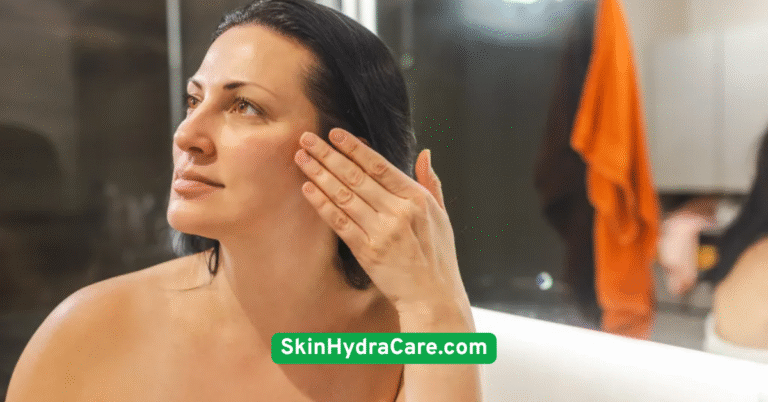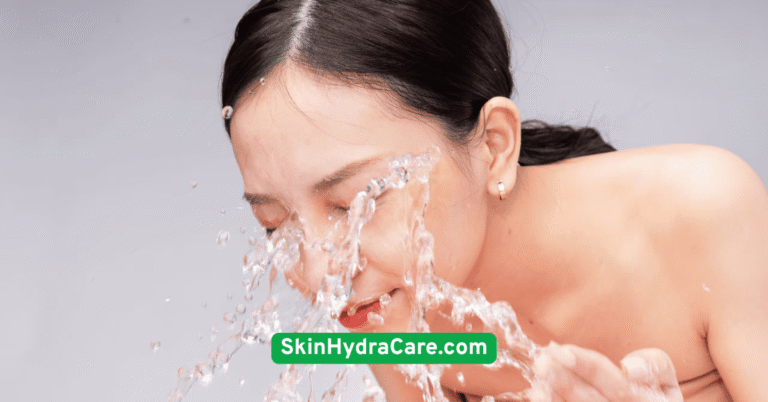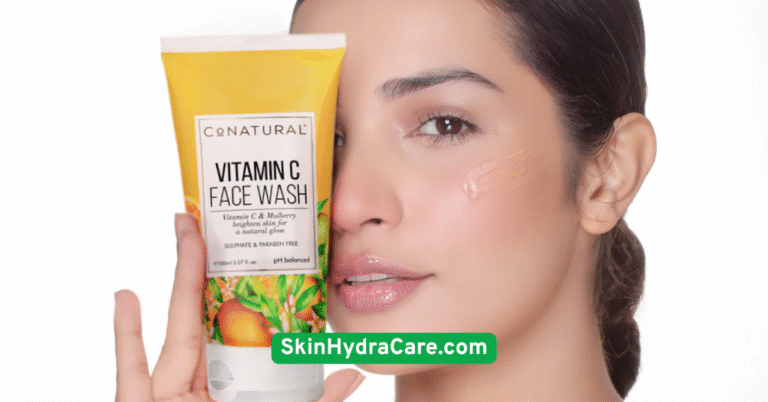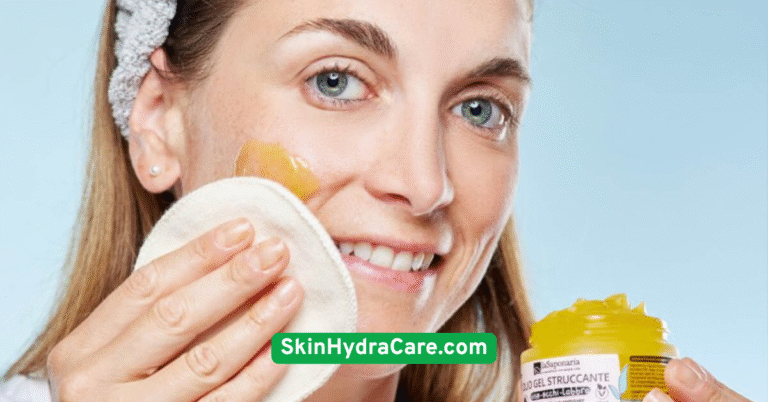30 Hydrating Skincare Tips to Calm Redness

1. Choose Gentle, Hydrating Cleansers
When it comes to calming redness, the first step is treating your skin gently — starting with cleansing. Harsh cleansers can strip away your skin’s natural oils and worsen irritation. Opt for sulfate-free and fragrance-free formulas that cleanse without drying out your skin.Look for ingredients like glycerin or aloe vera that hydrate as they clean. These help maintain your skin’s moisture barrier, which is essential for reducing redness. Avoid products that foam excessively or contain alcohols, as they can aggravate sensitive skin. Gentle cleansing morning and night sets the foundation for calm, hydrated skin.

2. Use a Hydrating Toner with Soothing Ingredients
Many people overlook the power of toners in calming redness. A hydrating toner can restore your skin’s pH balance and prep it to absorb serums and moisturizers better. Choose toners that contain soothing ingredients like rose water, chamomile, or calendula.Avoid toners with alcohol or strong astringents, which can dry and irritate skin further. Spritz your toner gently using a cotton pad or your hands and let it absorb naturally. This simple step adds a boost of hydration and calming benefits that your skin will thank you for.

3. Incorporate Hyaluronic Acid for Intense Hydration
Hyaluronic acid (HA) is a skincare superstar, especially for sensitive or redness-prone skin. It acts like a moisture magnet, pulling hydration from the air into your skin and keeping it plump and soft.The best part? HA is lightweight and non-irritating, making it perfect for calming inflamed skin. Apply a hyaluronic acid serum right after your toner while your skin is still slightly damp to lock in moisture. Layer it under your moisturizer for an extra hydration boost that supports your skin barrier and soothes redness.

4. Opt for Moisturizers with Ceramides
Ceramides are natural lipids found in your skin barrier that keep it intact and hydrated. When your skin barrier is damaged, redness and irritation often follow. Using a moisturizer rich in ceramides can help repair this barrier, reducing sensitivity and calming redness over time.Look for moisturizers labeled as “barrier repair” or “restorative” with ceramide blends. These products often combine ceramides with fatty acids and cholesterol to strengthen your skin’s defenses. Applying such a moisturizer morning and night is a game-changer for sensitive, red skin.

5. Use Aloe Vera to Soothe Irritation
Aloe vera has been used for centuries as a natural remedy for irritated skin. It’s packed with vitamins, antioxidants, and anti-inflammatory compounds that help calm redness quickly.You can use pure aloe vera gel directly on red patches or look for skincare products containing aloe extract. Aloe hydrates and cools your skin, reducing that tight, uncomfortable feeling that often comes with redness. Whether applied alone or layered under your moisturizer, aloe vera is a gentle ally in your skincare routine.
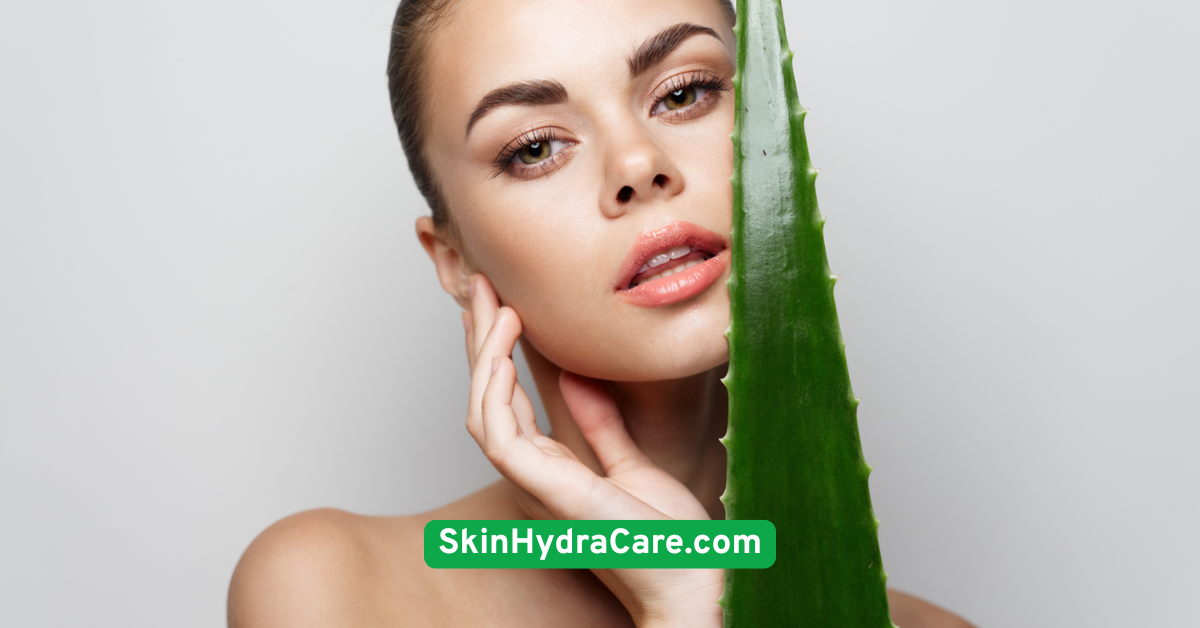
6. Apply Cold Compresses to Reduce Redness
Sometimes, when redness flares up, a cold compress can provide instant relief. Cold temperatures constrict blood vessels, reducing inflammation and calming the skin.Wrap some ice cubes in a clean cloth and gently press onto the affected areas for 5–10 minutes. Avoid applying ice directly to the skin to prevent frostbite. Cold compresses are especially helpful after sun exposure or irritation from environmental factors.

7. Avoid Over-Exfoliating to Protect Skin Barrier
Exfoliation can reveal brighter skin, but overdoing it can be harmful, especially if you have redness-prone skin. Excessive scrubbing or harsh chemical exfoliants can weaken your skin barrier and cause more inflammation.Stick to gentle exfoliants like lactic acid or fruit enzymes, and limit exfoliation to once or twice a week. Pay attention to how your skin reacts and stop if you notice increased redness or sensitivity. A protected skin barrier is essential for lasting hydration and calmness.

8. Incorporate Antioxidant Serums to Combat Inflammation
Antioxidants help fight free radicals, which contribute to skin inflammation and redness. Vitamin C and niacinamide are two potent antioxidants that also brighten and even out skin tone.Niacinamide, in particular, is fantastic for reducing redness and strengthening your skin barrier. Vitamin C serums should be applied in the morning under sunscreen, while niacinamide can be used morning or night. These serums complement your hydration routine by calming the skin from within.

9. Use SPF Daily to Prevent UV-Induced Redness
Sun exposure is a major culprit for worsening redness and irritation. UV rays weaken the skin barrier and trigger inflammation. Using a broad-spectrum sunscreen daily is non-negotiable if you want to calm redness.Opt for mineral sunscreens with zinc oxide or titanium dioxide, as they tend to be gentler on sensitive skin. Many hydrating sunscreens also contain soothing ingredients like aloe or antioxidants. Remember to reapply every two hours when outdoors and use sun-protective clothing whenever possible.

10. Stay Hydrated by Drinking Plenty of Water
Hydration isn’t just about what you put on your skin — it starts from within. Drinking plenty of water throughout the day helps maintain your skin’s moisture balance and overall health.Try to drink at least 8 glasses of water daily. Herbal teas and infused water with cucumber or mint can be tasty ways to boost hydration. Well-hydrated skin is more resilient and less prone to redness and irritation.

11. Avoid Hot Water During Cleansing and Bathing
Hot water feels relaxing, but it can strip your skin of natural oils and worsen redness. Lukewarm water is kinder to sensitive skin and helps maintain your skin’s moisture barrier.Make it a habit to use lukewarm water when washing your face and bathing. This simple switch can prevent dryness and inflammation, keeping your skin calm and hydrated.

12. Use Overnight Hydrating Masks for Skin Repair
Overnight masks provide a concentrated dose of hydration while your skin repairs itself during sleep. These leave-on formulas create a moisture seal that prevents water loss.Look for masks containing hyaluronic acid, ceramides, and soothing botanicals like calendula. Use them once or twice a week to boost your hydration and calm redness. Your skin will thank you with a refreshed, plump look by morning.

13. Incorporate Oatmeal-Based Products for Soothing
Colloidal oatmeal has remarkable anti-inflammatory and moisturizing properties, making it ideal for calming redness. It forms a protective barrier on the skin and relieves itching and irritation.You can find oatmeal in cleansers, masks, and moisturizers designed for sensitive skin. DIY oatmeal baths or masks are also a budget-friendly option. Incorporating oatmeal regularly can reduce redness and restore comfort to your skin.

14. Limit Use of Fragranced Skincare Products
Fragrances are one of the most common irritants in skincare. Even natural fragrances can trigger redness and allergic reactions in sensitive skin.Choose fragrance-free and hypoallergenic products to minimize this risk. Reading product labels carefully is key — avoid anything with “parfum” or “fragrance” listed. Sticking to simple, clean formulas helps keep your skin calm and irritation-free.

15. Avoid Alcohol-Based Toners and Astringents
Alcohol-based toners might seem like a quick fix for oily or red skin, but they often do more harm than good. Alcohol strips away moisture, exacerbating dryness and redness.Instead, opt for hydrating toners with soothing ingredients. If you need oil control, look for niacinamide or witch hazel without alcohol. A gentle approach keeps your skin barrier strong and redness under control.

16. Include Niacinamide for Redness Reduction
Niacinamide is a powerhouse ingredient for calming redness and strengthening the skin barrier. It helps regulate oil production, reduces inflammation, and improves skin texture.Incorporate niacinamide serums or moisturizers into your daily routine. It works well with most other skincare ingredients and is suitable for all skin types. Consistent use can lead to visibly calmer, more balanced skin.

17. Use Gentle Face Masks with Hydrating Ingredients
Face masks don’t have to be harsh or drying. Hydrating masks packed with ingredients like aloe vera, honey, or hyaluronic acid can soothe redness while nourishing your skin.Apply a gentle mask once or twice a week to give your skin a boost of moisture and calm inflammation. Avoid masks with strong fragrances or exfoliants, which may aggravate sensitive skin.

18. Incorporate Fatty Acids to Repair Skin Barrier
Omega-3 and omega-6 fatty acids are essential for healthy skin barrier function. These fats help reduce inflammation and keep your skin hydrated from the inside out.Eat foods rich in fatty acids like salmon, walnuts, and flaxseeds, or consider supplements after consulting your doctor. Topical products with squalane or jojoba oil also provide these beneficial fatty acids directly to your skin.

19. Avoid Harsh Physical Scrubs
Physical scrubs can cause tiny tears in sensitive skin, leading to increased redness and irritation. If you want exfoliation, opt for gentler chemical exfoliants or enzyme-based options.Be cautious with frequency — once a week or less is usually sufficient. Your goal is to smooth skin texture without damaging your delicate skin barrier.

20. Keep Your Skin Routine Simple and Consistent
Complex skincare routines might seem appealing, but for redness-prone skin, less is often more. Using too many products at once can overwhelm and irritate your skin.Stick to a simple, consistent routine with gentle cleansing, hydrating serums, moisturizer, and sunscreen. Introduce new products slowly, patch testing each to avoid surprises. A calm, predictable routine supports skin healing and reduces redness.

21. Use Mineral-Based Makeup to Avoid Irritation
If you wear makeup, mineral-based options tend to be better for sensitive, red skin. They’re often free from irritating chemicals and provide a gentle, breathable coverage.Look for foundations with zinc oxide or titanium dioxide for added sun protection. Always remove makeup gently at night to prevent clogged pores and irritation.

22. Manage Stress to Reduce Skin Flare-Ups
Stress can cause or worsen skin redness by triggering inflammation and hormonal imbalances. Incorporating stress management techniques into your daily life can improve your skin’s health.Try meditation, yoga, or simply taking time for hobbies that relax you. Adequate sleep and regular exercise also play a huge role in calming skin flare-ups.

23. Incorporate Probiotics in Your Skincare and Diet
Probiotics support a healthy skin microbiome, which helps reduce inflammation and redness. Topical probiotic skincare products can strengthen your skin’s natural defenses.Eating fermented foods like yogurt, kimchi, and sauerkraut nourishes your gut health, which in turn benefits your skin. A balanced microbiome is a key part of calming sensitive, red skin.

24. Avoid Smoking and Limit Alcohol Consumption
Smoking and excessive alcohol intake can dry out your skin, weaken the barrier, and increase redness. Quitting smoking and moderating alcohol helps restore your skin’s hydration and glow.These lifestyle changes also improve overall health, giving your skin a better chance to heal and stay calm.

25. Use Thermal Spring Water Sprays for Instant Relief
Thermal spring water sprays are a quick and refreshing way to soothe red, irritated skin. Rich in minerals, they help reduce inflammation and hydrate throughout the day.Keep a spray bottle handy for whenever your skin feels overheated or dry. Just spritz and let it absorb — no rinsing needed!

26. Avoid Frequent Temperature Changes
Rapid temperature changes, like moving between air conditioning and hot outdoors, can aggravate redness. Your blood vessels expand and contract, increasing inflammation.Try to maintain a consistent environment, dress appropriately, and use protective skincare products to buffer your skin. This helps prevent flare-ups caused by weather or indoor climates.

27. Use Face Oils That Support Hydration
Certain face oils, like jojoba, squalane, or rosehip oil, provide deep hydration without clogging pores. They help lock in moisture and repair the skin barrier.Apply oils after your moisturizer to seal in hydration, especially at night. Choose non-comedogenic oils to avoid breakouts while soothing redness.

28. Consult a Dermatologist for Persistent Redness
If redness persists despite your best efforts, it might be time to consult a dermatologist. Professional advice can help identify underlying causes and recommend treatments like prescription creams or laser therapy.Dermatologists can tailor a skincare plan suited to your unique needs, speeding up your journey to calm, hydrated skin.

29. Track Your Skincare Routine and Redness Flare-Ups
Keeping a journal or using skincare apps to track your routine and redness can help identify triggers. Note when flare-ups happen and what products or habits might have contributed.This information empowers you to make informed changes, improving your skin over time with less trial and error.

30. Be Patient and Consistent for Best Results
Skin healing takes time — don’t expect overnight miracles. Consistency with gentle, hydrating products is the secret to calming redness long-term.Celebrate small improvements and keep nurturing your skin. With patience and care, your complexion will gradually become calmer, more balanced, and glowing with health.

Conclusion
Caring for redness-prone skin can feel like a challenge, but hydration is a powerful ally in soothing irritation and restoring balance. These 30 hydrating skincare tips will help you build a calm, effective routine that protects and nourishes your skin every day. Remember, gentle cleansing, barrier repair, sun protection, and stress management all play vital roles in reducing redness.
Start small, be patient, and listen to your skin’s needs. Your journey to radiant, calm skin begins with hydration — and with these tips, you’re well on your way to glowing confidence in 2025!
